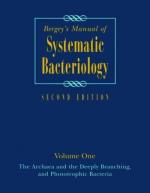|
This section contains 619 words (approx. 3 pages at 300 words per page) |

|
At first glance, members of domain Archaea look very much like Bacteria in morphology, but biochemical and evolutionary studies have shown that they are a unique branch of life, separate from Bacteria (Eubacteria) and Eukaryotes. This was first recognized by comparing the sequences of their ribosomal deoxyribonucleic acid (DNA) and their type of cell wall to those of other organisms. Although Archaea also have a prokaryotic cell organization, other differences set them apart from Bacteria. While most Archaea have cell walls, they do not contain murein as in Bacteria, but are made of a number of different molecules, including proteins. The lipids found in their cell membranes are also different from those found in Bacteria and eukaryotes. Archaea can be motile by rotating flagella, but the proteins that make up the flagella are different from those found in Bacteria. Archaea have a number of traits that make them...
|
This section contains 619 words (approx. 3 pages at 300 words per page) |

|


